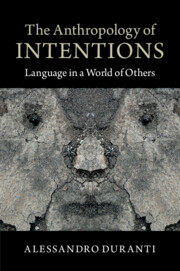Book contents
- Frontmatter
- Contents
- List of figures
- Acknowledgments
- 1 Rethinking anti-intentionalism
- 2 Intentions in speaking and acting: the Standard Theory and its foes
- 3 The avoidance of intentional discourse: a Samoan case study
- 4 The invention of promising in the Samoan translation of the Bible
- 5 Intentionality and truth, revisited
- 6 Speaker intentions and the role of the audience in a political campaign in the US
- 7 A dialogue on intentions
- 8 Opacity of other minds: local theories revisited
- 9 Intentions and their modifications: a lesson from Husserl
- 10 A sense of the other: from intentionality to intersubjectivity
- 11 The intentional continuum
- Appendix A Transcription conventions for English examples
- Appendix B Transcription conventions and abbreviations used in the Samoan examples
- Notes
- References
- Index
5 - Intentionality and truth, revisited
Published online by Cambridge University Press: 18 December 2014
- Frontmatter
- Contents
- List of figures
- Acknowledgments
- 1 Rethinking anti-intentionalism
- 2 Intentions in speaking and acting: the Standard Theory and its foes
- 3 The avoidance of intentional discourse: a Samoan case study
- 4 The invention of promising in the Samoan translation of the Bible
- 5 Intentionality and truth, revisited
- 6 Speaker intentions and the role of the audience in a political campaign in the US
- 7 A dialogue on intentions
- 8 Opacity of other minds: local theories revisited
- 9 Intentions and their modifications: a lesson from Husserl
- 10 A sense of the other: from intentionality to intersubjectivity
- 11 The intentional continuum
- Appendix A Transcription conventions for English examples
- Appendix B Transcription conventions and abbreviations used in the Samoan examples
- Notes
- References
- Index
Summary
Introduction
In the previous chapters I have reviewed the anthropological critique of the use of intentions in speech act theory and presented some data that further question the universality of a theory of human action mostly, if not exclusively, founded on intentions. My move to reduce or at least contain the role of an individual’s intentions in social theory should not be understood as a return to behaviorism or a flat rejection of cognitive theories that rely on the reconstruction of rational inferential processes. Rather, my intellectual engagement with the literature, on the one hand, and with analysis of spontaneous verbal exchanges, on the other, has been motivated by the need to show that in some situations participants do not seem to invoke intentions as much as a certain type of folk psychology might lead us to expect. Furthermore, a historical and cross-linguistic perspective also shows that the disembodied notion of intention found in the philosophical literature is not a universal. These data raise the issue of whether a rethinking of intentionality in anthropology might affect the ways in which we write about culture. Once we start to examine this issue, we realize that it is difficult to talk about intentionality without also rethinking the notion of truth that is adopted in ethnographic accounts.
- Type
- Chapter
- Information
- The Anthropology of IntentionsLanguage in a World of Others, pp. 101 - 134Publisher: Cambridge University PressPrint publication year: 2015

